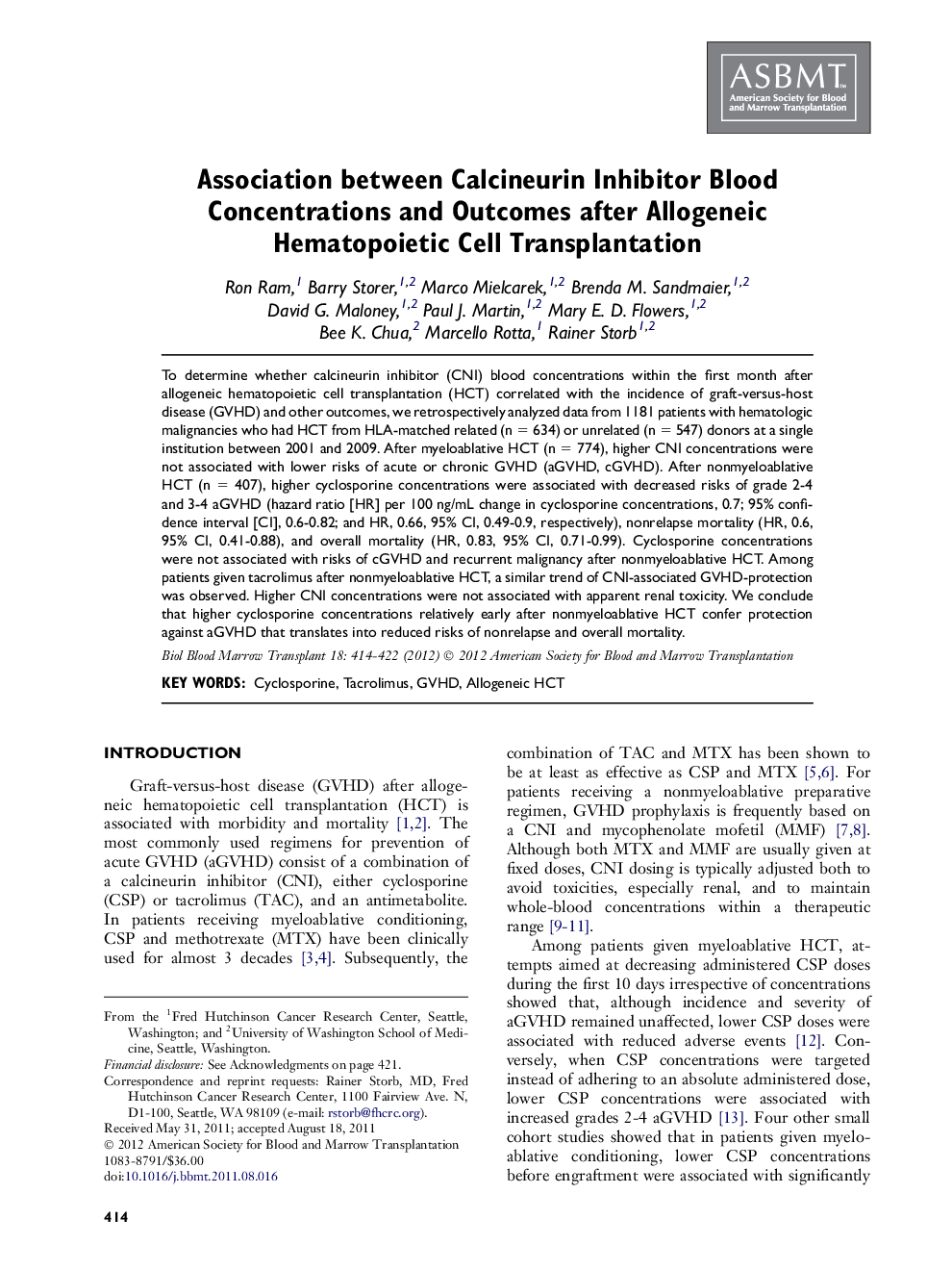| Article ID | Journal | Published Year | Pages | File Type |
|---|---|---|---|---|
| 2102667 | Biology of Blood and Marrow Transplantation | 2012 | 9 Pages |
To determine whether calcineurin inhibitor (CNI) blood concentrations within the first month after allogeneic hematopoietic cell transplantation (HCT) correlated with the incidence of graft-versus-host disease (GVHD) and other outcomes, we retrospectively analyzed data from 1181 patients with hematologic malignancies who had HCT from HLA-matched related (n = 634) or unrelated (n = 547) donors at a single institution between 2001 and 2009. After myeloablative HCT (n = 774), higher CNI concentrations were not associated with lower risks of acute or chronic GVHD (aGVHD, cGVHD). After nonmyeloablative HCT (n = 407), higher cyclosporine concentrations were associated with decreased risks of grade 2-4 and 3-4 aGVHD (hazard ratio [HR] per 100 ng/mL change in cyclosporine concentrations, 0.7; 95% confidence interval [CI], 0.6-0.82; and HR, 0.66, 95% CI, 0.49-0.9, respectively), nonrelapse mortality (HR, 0.6, 95% CI, 0.41-0.88), and overall mortality (HR, 0.83, 95% CI, 0.71-0.99). Cyclosporine concentrations were not associated with risks of cGVHD and recurrent malignancy after nonmyeloablative HCT. Among patients given tacrolimus after nonmyeloablative HCT, a similar trend of CNI-associated GVHD-protection was observed. Higher CNI concentrations were not associated with apparent renal toxicity. We conclude that higher cyclosporine concentrations relatively early after nonmyeloablative HCT confer protection against aGVHD that translates into reduced risks of nonrelapse and overall mortality.
